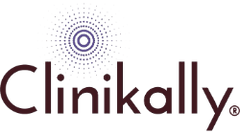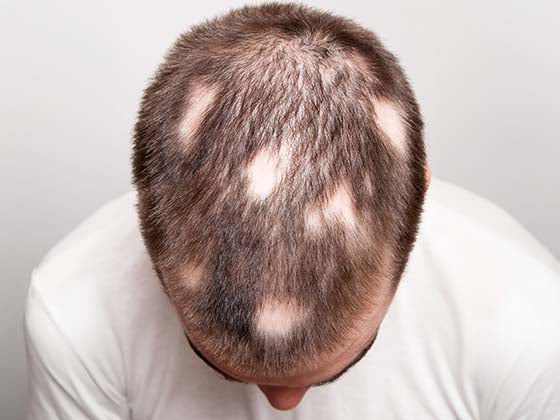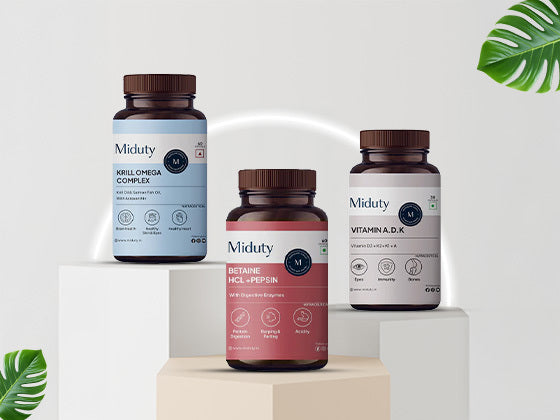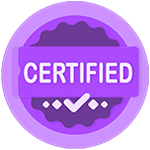Yellow nails can be caused by several factors, including fungal infections, medical conditions, lifestyle choices, and certain medications. This blog provides a comprehensive overview of the causes and treatments of yellow nails.
The Root Causes of Yellow Nails
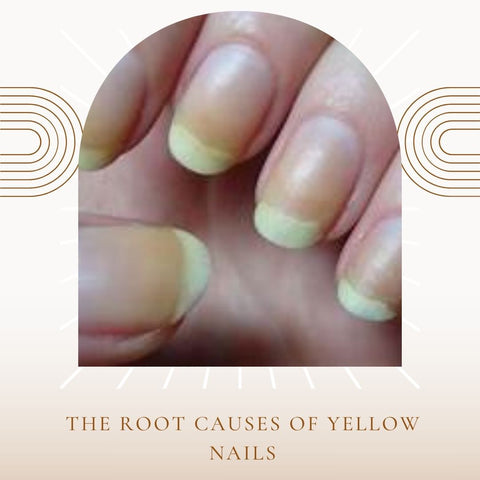
The causes of yellow nails can vary, and determining the underlying issue is critical for effective treatment. Some common root causes of yellow nails include fungal infections (onychomycosis), nail psoriasis, yellow nail syndrome, nail discoloration from nail polish, smoking, nail trauma, yellow nail syndrome, systemic diseases, nutritional deficiencies, and medications.
Fungal Infections: A Common Culprit
Fungal infections are a common cause of yellow nails. Onychomycosis is a fungal infection of the nails that causes them to become discoloured, thickened, and brittle. Here's why fungal infections are a common cause of yellow nails.
-
Fungi thrive in warm, moist environments, so the area under and around nails is an ideal breeding ground. Prolonged contact with moisture, such as sweaty socks or shoes, can promote fungal growth.
-
Injuries or trauma to the nails can leave small openings for fungi to enter and infect the nail bed. This can happen when you run, wear tight-fitting shoes, or get a pedicure with unsterilized tools.
-
Neglecting proper nail hygiene, such as failing to keep nails clean and dry or wearing dirty socks and shoes, can raise the risk of fungal infection.
-
A weakened immune system, caused by factors such as age, underlying health conditions, or certain medications, can make people more vulnerable to fungal infections, including those that affect their nails.
-
Fungal infections can be transmitted from person to person or from one nail to another. Sharing nail clippers, shoes, or socks with someone who has a fungal infection increases your chances of developing one yourself.
-
Conditions like psoriasis and eczema can weaken the nail structure, making it easier for fungi to invade and cause infection. In these cases, fungal infections can exacerbate the pre-existing condition and contribute to nail yellowing.
Lifestyle Factors: From Smoking to Nail Polish
Several lifestyle factors can lead to yellow nails. Managing lifestyle factors that cause yellow nails can help prevent or reduce discoloration. This includes quitting smoking, using protective base coats when applying nail polish, avoiding harsh chemicals, practicing good nail hygiene, wearing properly fitting footwear, and addressing any underlying health issues. If yellow nails persist despite lifestyle changes, see a doctor for a proper diagnosis and treatment.
Nutritional Deficiencies and Nail Health
Nutritional deficiencies can have an impact on nail health, potentially causing discoloration, brittleness, and other abnormalities. Here are some key nutrients and their roles in maintaining healthy nails:
-
Biotin (Vitamin B7): Biotin is required for the maintenance of healthy nails, hair and skin. Biotin deficiency can cause brittle nails and contribute to thinning and discoloration.
-
Vitamin E: Vitamin E is an antioxidant that protects cells against free radical damage. It improves nail health by moisturising and strengthening the nails, reducing brittleness, and preventing breakage.
-
Iron: Iron deficiency anemia can lead to brittle nails that may become concave or spoon-shaped. The synthesis of haemoglobin, which transports oxygen to all tissues, including the nail bed, requires iron.
-
Zinc: Zinc is necessary for the synthesis of many proteins, including those that support the structure of nails. Zinc deficiency can cause thinning, sluggish nail growth, and heightened infection susceptibility.
-
Omega-3 Fatty Acids: By lowering inflammation and encouraging moisture retention, omega-3 fatty acids—which are present in walnuts, flaxseeds, and fatty fish—help preserve the health of nails. Nails that are dry and brittle may be the result of an omega-3 fatty acid deficit.
-
Vitamin C: Collagen synthesis, which is critical for the integrity and strength of nails, depends on vitamin C. Vitamin C deficiency can result in weak, brittle nails that are more likely to break or split.
-
Protein: The synthesis of keratin, the protein that comprises nails, depends on protein. A low-protein diet can cause weak nails, sluggish nail growth, and a higher chance of nail infections.
Effective Treatments and Home Remedies

The underlying cause of yellow nails must be addressed before treatment. Here are some effective treatments and home remedies to help with yellow nails:
-
If the yellow nails are caused by a fungal infection (onychomycosis), antifungal medications may be prescribed. These medicines can take the form of topical creams, nail lacquers, or oral medications. They work by removing the fungus that is causing the infection.
-
Over-the-counter antifungal creams, ointments, or solutions can be applied directly to infected nails. Follow the instructions on the product label and continue treatment for the recommended time.
-
In more severe fungal nail infections, a healthcare professional may prescribe oral antifungal medications. These medications work systemically to eliminate the fungal infection from the inside.
-
If the yellowing is caused by nail polish staining, use an acetone-based nail polish remover to help eliminate the discoloration. Use it sparingly and moisturise your nails afterwards to avoid dehydration.
-
Soak your nails in a solution of hydrogen peroxide and water to lighten yellow nails. In a bowl, combine equal parts hydrogen peroxide and water. Soak your nails for 10-15 minutes. Make sure to moisturise your nails afterwards.
-
Tea tree oil contains natural antifungal properties that can be used to treat fungal nail infections. Dilute tea tree oil with a carrier oil, such as coconut oil, and apply it directly to the affected nails. Repeat this process daily until the infection clears.
-
Soaking your nails in a vinegar-water solution can help fight fungal infections and lighten yellow nails. Mix equal parts white vinegar and warm water in a bowl and soak your nails for 15-20 minutes. Rinse and dry thoroughly afterwards.
-
Moisturise your nails and cuticles regularly to avoid dryness and brittleness, both of which can contribute to yellowing. Use a moisturising cream or oil every day, paying special attention to the cuticles.
-
Protective measures include wearing gloves when working with chemicals or performing tasks that may expose your nails to harmful substances. This can help to avoid damage and discoloration.
-
Keep your nails clean and dry, trim them regularly, and avoid causing trauma or injury to the nail bed.
DIY Whitening Solutions: Lemon, Baking Soda, and More
DIY whitening solutions containing household ingredients such as lemon and baking soda can effectively lighten yellow nails. Here are some DIY solutions you can try:
-
Lemon Juice: Lemon juice has natural bleaching properties that can help lighten yellow nails. Simply cut a lemon in half and apply the juice to your nails for several minutes. Alternatively, soak your nails in a solution of lemon juice and warm water for 10-15 minutes. If you have any cuts or open wounds around your nails, avoid using lemon juice because it may irritate them.
-
Baking Soda: Baking soda is a mild abrasive that can be used to exfoliate the nail surface and remove stains. Make a paste by combining baking soda and water to achieve a thick consistency. Apply the paste to your nails and gently scrub with a soft toothbrush or nail brush. Rinse with warm water, then pat dry. To achieve the best results, repeat this process 2-3 times per week.
-
Hydrogen Peroxide: Hydrogen peroxide has bleaching properties and can help lighten yellow nails. In a bowl, combine equal parts hydrogen peroxide and water. Soak your nails for 10-15 minutes. Rinse with water and moisturise afterwards to avoid dryness.
-
Vinegar: Vinegar, particularly white vinegar, can help combat fungal infections and lighten yellow nails. Mix equal parts vinegar and warm water in a bowl and soak your nails for 15-20 minutes. Rinse and pat dry afterward. You can also apply vinegar directly to the nails using a cotton ball.
-
Whitening Toothpaste: Whitening toothpaste contains mild abrasives and bleaching agents that can help lighten yellow nails. Apply a small amount of whitening toothpaste to your nails and gently scrub them using a soft toothbrush. Rinse with warm water and moisturize afterward.
-
Strawberries: Strawberries contain natural acids that can help exfoliate the nails and lighten yellow discoloration. Mash up a few strawberries and apply the pulp to your nails. Leave it on for 5-10 minutes before rinsing with warm water and patting dry.
-
Tea Tree Oil: Tea tree oil has antifungal properties that can help treat fungal infections and lighten yellow nails. Dilute tea tree oil with a carrier oil like coconut oil and apply it directly to the affected nails. Leave it on for 10-15 minutes before rinsing with water.
-
Olive Oil: Olive oil is rich in antioxidants and moisturizing properties that can help nourish the nails and prevent dryness. Massage a few drops of olive oil into your nails and cuticles before bedtime and leave it on overnight. Rinse with warm water in the morning.
Professional Treatments: When to Seek Help
If you have persistent yellowing of the nails or other symptoms associated with the condition, you should seek professional medical advice. A healthcare professional can accurately diagnose the underlying cause of yellow nails and recommend effective treatment options. Early intervention can help to avoid complications and promote good nail health.
Nail Care Essentials: Keeping Your Nails Healthy
Keeping your nails healthy requires consistent care and attention. To maintain strong, beautiful nails, keep them clean and dry, moisturise, trim them properly, file them carefully, protect them, use nail strengthener, avoid harsh chemicals, stay hydrated, eat a balanced diet, protect against UV damage, avoid nail biting and picking, give nails a break, and perform regular maintenance. By incorporating these nail care essentials into your routine, you can help keep your nails strong and healthy while avoiding common issues like brittleness, breakage, and discoloration. If you are concerned about your nail health or notice any changes or abnormalities, see a dermatologist or healthcare professional for an evaluation and advice.
Prevention is Key: Tips to Maintain Bright and Healthy Nails
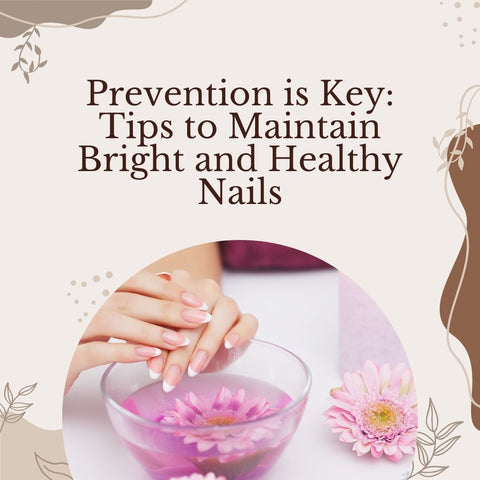
Prevention is the key to keeping your nails bright and healthy. Here are some tips to help you keep your nails looking great:
-
Regularly washing your nails with soap and water will help to keep them clean. To prevent dirt and bacteria buildup, clean underneath the nails with a soft nail brush and gently push the cuticles back.
-
Moisture can weaken nails, making them more susceptible to breakage and infection. After washing your nails, make sure to thoroughly dry them and avoid prolonged contact with water.
-
Use a moisturising hand cream or cuticle oil to keep your nails and cuticles hydrated. This helps to avoid dryness and cracking, which can result in brittleness and breakage.
-
Wear gloves when doing housework or working with harsh chemicals to protect your nails from harm. Also, wear gloves in cold weather to keep your nails from becoming dry and brittle.
-
Trim your nails regularly using clean, sharp nail clippers. To avoid ingrown nails, cut them straight across rather than too short.
-
Use a gentle nail file to shape your nails and smooth any rough edges. File in one direction to keep the nails from weakening and splitting.
-
Be gentle with your nails and do not use them to open packages or scratch surfaces. Trauma to the nails can cause damage and increase the risk of infection.
-
A healthy diet high in vitamins, minerals, and nutrients is critical for nail health. Include foods high in protein, biotin, vitamin E, and omega-3 fatty acids to help your nails grow strong and healthy.
-
Drink plenty of water throughout the day to keep your nails hydrated and avoid becoming dry and brittle.
-
Nail polish can weaken nails over time, especially if it is applied frequently or left on for an extended period. Allow your nails to breathe and recover by taking a break from polishing them on occasion.
-
Use nail polish and care products that are free of harsh chemicals like formaldehyde, toluene, and DBP, which can be harmful to your nails.
-
Pay attention to any changes in the colour, texture, or shape of your nails. If you notice any abnormalities or signs of infection, see a dermatologist or healthcare professional for an evaluation and treatment.
Daily Nail Care Routine: Hydration and Protection
A daily nail care routine that prioritises hydration and protection can keep your nails healthy and strong. Here's a simple daily routine to follow:
-
Morning Routine: Begin the day by washing your hands with gentle soap and water to remove dirt and debris from your nails and skin. Dry your hands and nails thoroughly with a clean towel to avoid moisture-related nail problems. Apply a moisturizing hand cream or lotion, making sure to massage it into your nails and cuticles as well. Look for products containing hydrating ingredients like shea butter, glycerin, or vitamin E.
-
Throughout the Day: Keep your nails safe from harsh chemicals and excess moisture. Wear gloves when doing housework or working with cleaning products. Avoid using your nails to open cans, remove stickers, or do other tasks that could cause damage. If you frequently wash your hands throughout the day, use hand cream or lotion as needed to keep your nails and skin moisturised.
-
Evening Routine: Before going to bed, remove any nail polish with a gentle, acetone-free remover to avoid drying out your nails. Wash your hands with mild soap and water, paying close attention to your nails and cuticles. Pat your hands and nails dry with a clean towel, ensuring they are completely dry. Apply a generous amount of cuticle oil or a rich moisturizer to your nails and cuticles to hydrate and nourish them overnight. If desired, apply a strengthening or repairing nail treatment to address any specific nail concerns, such as brittleness or peeling.
-
Weekly Maintenance: Using a scrub or exfoliating brush, gently exfoliate your hands and nails once or twice a week to remove dead skin cells and improve blood circulation. Trim your nails with clean, sharp nail clippers and file them into the desired shape. Avoid cutting your nails too short or rounding the edges to prevent damage and ingrown nails. Apply a hydrating mask or treatment specifically formulated for nails and cuticles to deeply nourish and moisturize them.
-
Additional Tips: Drink plenty of water throughout the day to keep your nails healthy. Eat a balanced diet rich in vitamins, minerals, and nutrients essential for nail health, including protein, biotin, and omega-3 fatty acids. Consider taking a daily supplement containing ingredients like biotin, collagen, or silica to support nail strength and growth. Protect your nails from UV damage by applying UV-protective nail polish or wearing gloves when spending prolonged periods in the sun.
Choosing the Right Nail Products: Avoiding Harsh Chemicals
Choosing nail products free of harsh chemicals is critical for keeping nails healthy and reducing the risk of damage or irritation. Formaldehyde, Toluene, Dibutyl Phthalate (DBP), Camphor, Formaldehyde resin, Ethyl Tosylamide, and Xylene are some common harsh chemicals to avoid in nail products, as well as tips for choosing safer alternatives. When selecting nail products, carefully read the ingredient labels and look for those that are free of harsh chemicals. Look for labels that say "3-free," "5-free," or "7-free," indicating that the product is free of the most common harmful chemicals. Consider using nail polishes and treatments made with natural, non-toxic ingredients to reduce the risk of irritation and negative effects on nail health.
Lifestyle Changes: Diet and Habits for Stronger Nails
Lifestyle changes can have a significant impact on the strength and health of your nails. Here are some dietary and lifestyle changes you can make to promote stronger nails:
-
A nutritious diet high in vitamins, minerals, and nutrients is required for strong and healthy nails. Include protein-rich foods like lean meats, poultry, fish, eggs, beans, and nuts to promote nail growth and repair. Include foods high in biotin (vitamin B7), such as eggs, nuts, seeds, and whole grains, to help strengthen nails and prevent brittleness. Omega-3 fatty acids, which are found in fatty fish such as salmon, flaxseeds, and walnuts, can also help to improve nail health by reducing inflammation and promoting moisture retention.
-
Drink plenty of water all day to keep your body and nails hydrated. Dehydration can cause dry, brittle nails, so drink at least 8 glasses of water per day to maintain good nail health.
-
Consider taking nail health supplements that contain essential nutrients like biotin, vitamin E, and omega-3 fatty acids. However, always consult with a healthcare professional before beginning any new supplements to ensure their safety and suitability for you.
-
Reduce your exposure to harmful chemicals found in household cleaners, nail polish removers, and other cosmetics. Wear gloves when doing chores or working with chemicals to prevent nail damage and dehydration.
-
Be gentle with your nails and avoid damaging habits like biting, picking, or using them as a tool. Trim your nails regularly with clean, sharp nail clippers, and file them to the desired shape with a gentle nail file. Avoid excessive filing or buffing, as this can weaken the nails.
-
Keep your nails and cuticles hydrated by applying a moisturizing cream or oil regularly. Massage the product into your nails and cuticles to promote blood circulation and nourish the nail bed.
-
Wear gloves when exposed to cold weather, harsh weather conditions, or activities that may cause trauma or damage to your nails. Protecting your nails from external stressors can help prevent breakage and promote overall nail health.
-
Smoking and excessive alcohol consumption can deplete essential nutrients in the body and hinder nail health. Quit smoking and limit alcohol intake to promote stronger, healthier nails.
Elevating Your Nail Care Game: Tailored Advice for Radiant Nails
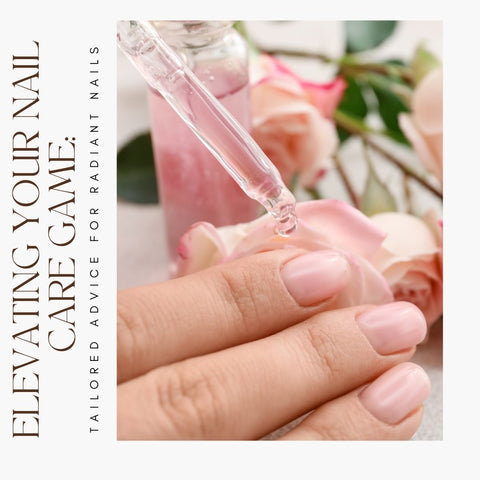
To improve your nail care game and achieve radiant nails, try incorporating the following tailored advice into your routine: personalised nail care routine, healthy diet and hydration, gentle nail care practices, protective measures, regular maintenance and treatment, nail strengthening products, preventative measures, mindful nail habits, professional consultation, and consistency and patience. By implementing these customised strategies and prioritising nail health and care, you can achieve radiant, healthy nails that boost your overall well-being and confidence. Remember to pay attention to your nails' needs, adjust your routine as necessary, and enjoy the journey to beautiful nails,
